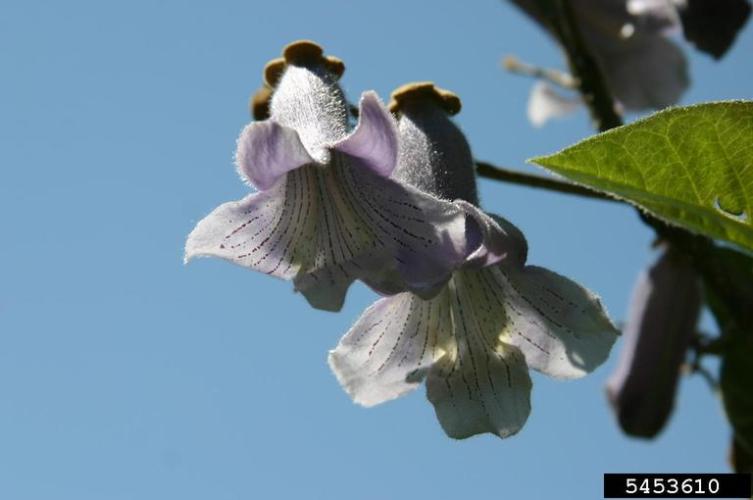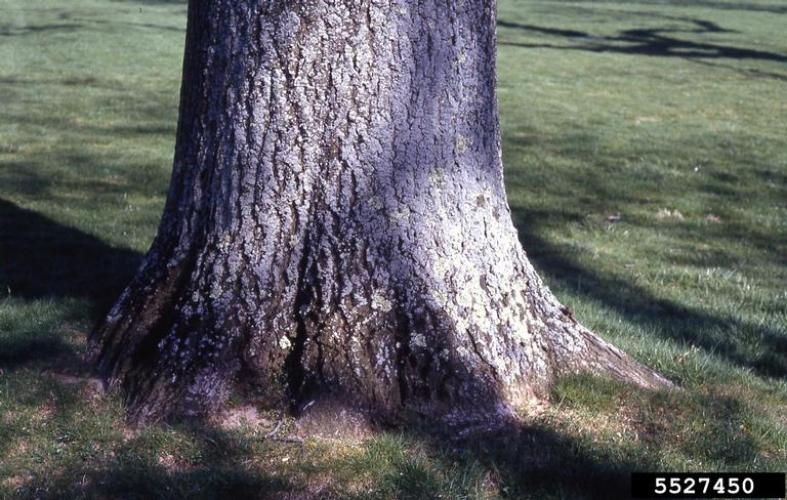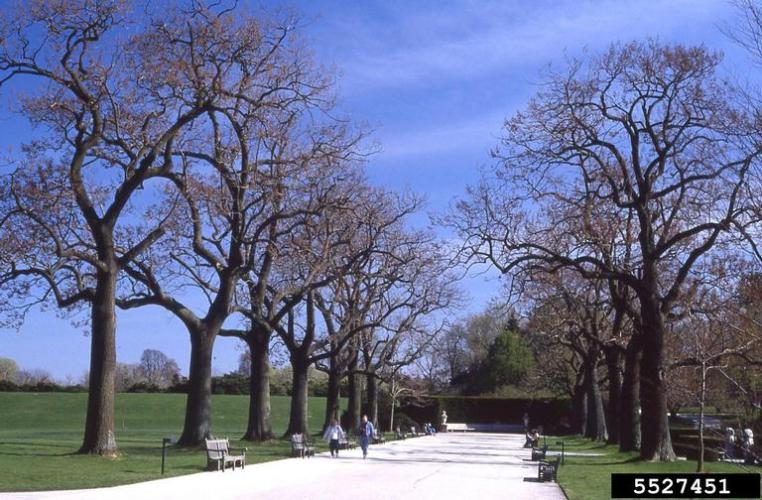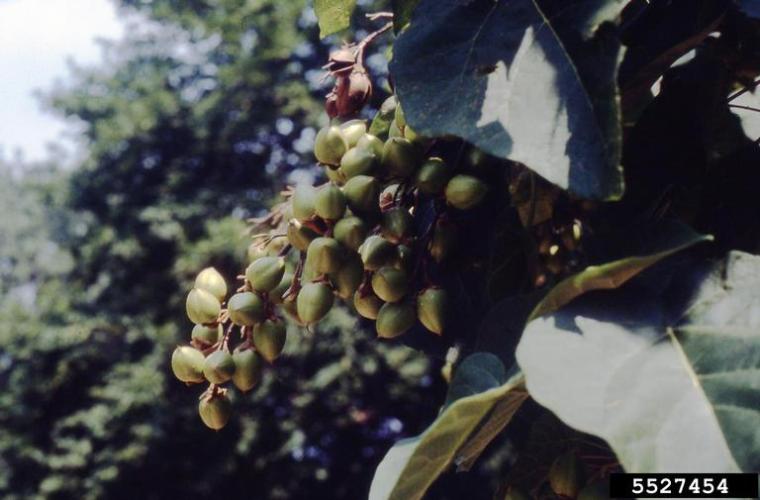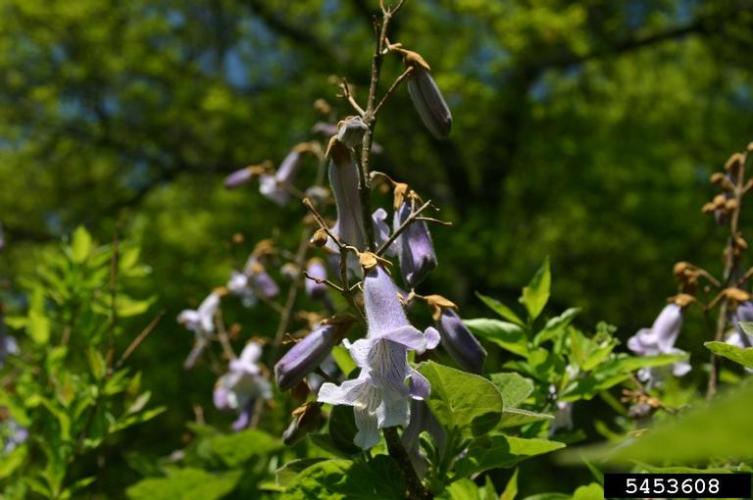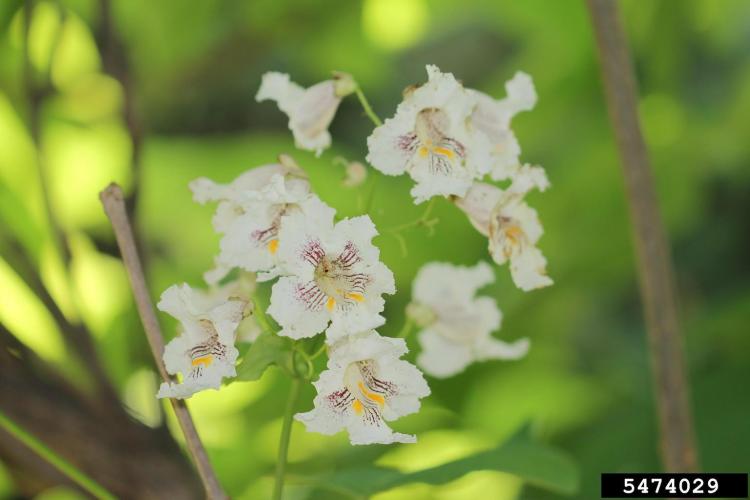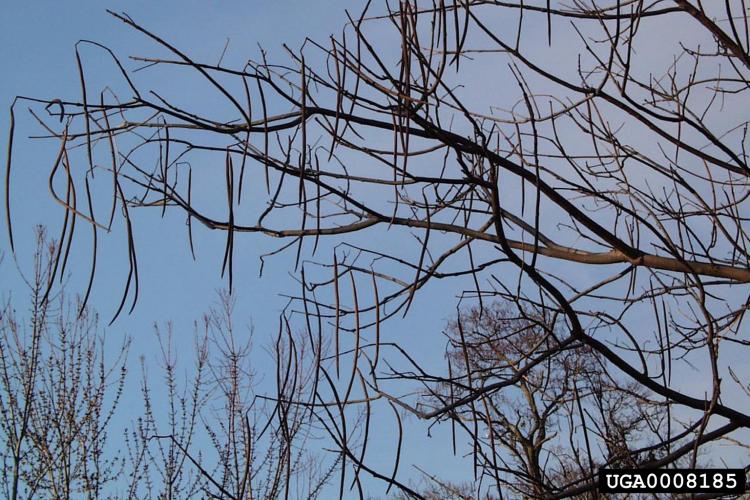Princess Tree
Identification
Appearance
Paulownia tomentosa is a medium sized tree (50-60 feet in height and 2 feet in diameter) that can commonly be mistaken for the native tree northern catalpa (Catalpa speciosa). Bark is gray-brown and rough, often developing lighter-colored shallow vertical fissures.
Foliage
Leaves are large, broadly oval to heart-shaped (6-12 inches long, 5-9 inches wide) and arranged opposite along the stem, hairy on both surfaces. Petioles are also hairy and can be sticky when young. Leaves growing off root sprouts have been measured up to 2 feet in length. Twigs are stout, brown, and speckled with white dots (lenticels). They can be slightly hairy when young. Lateral leaf scars are somewhat round, becoming darker and sunken. The pith is chambered or sometimes hollow.
Flowers
Large flowers (2 inches long) are fragrant and light violet-pink, appearing in showy upright clusters (8-12 inches in length) in early spring (April-May) before leaves emerge. They have tubular corollas, ending in 5 unequal lobes. Flower buds are hairy and linear, becoming round.
Fruit
Fruits (1-2 inches long, 1-1.5 inches wide) are egg-shaped capsules, divided into 4 inner compartments that contain the seeds. Fruits are light green in the summer, becoming dark brown in the winter, and persist in clusters on the tree until the following spring. The capsules split in half during late winter to release up to 2000 tiny winged, wind-borne seeds 0.08-0.12 inches.
Biology
This is considered a watch list species.
Origin
Princess tree is native to China and was first introduced into the United States as an ornamental in 1840.
Habitat
Man-made or disturbed habitats), forest edges, forests. Princess tree has also been cultivated in plantations for its specialty wood. This fast-growing tree is sometimes used on mining reclamation sites.
Threat
Princess Tree is an aggressive tree that invades disturbed natural areas including forests, roadsides, and stream banks.
Life Cycle
Princess tree can reproduce from seed or from root sprouts; the latter can grow to over 15 ft. in a single season. The root branches are shallow and horizontal without a strong taproot. Seed-forming pollen is fully developed before the onset of winter, and in spring the flowers are pollinated by insects. Seeds germinate within a few days on suitable substrate; seedlings grow quickly and flower in 8-10 years. Mature trees are often structurally unsound and rarely live more than 70 years.
Vermont Distribution
Citations
photo credit
Princess tree, 5453608, Leslie J. Mehrhoff, University of Connecticut, Bugwood.org
Flower, 5453610, Leslie J. Mehrhoff, University of Connecticut, Bugwood.org
Princess tree form, 5527451, T. Davis Sydnor, The Ohio State University, Bugwood.org
Fruit, 5527454, T. Davis Sydnor, The Ohio State University, Bugwood.org
Bark, 5527450, T. Davis Sydnor, The Ohio State University, Bugwood.org
Northern catalpa, 5474029, Rob Routledge, Sault College, Bugwood.org
Northern catalpa seeds, 0008185, Paul Wray, Iowa State University, Bugwood.org
